What do you know about ants? Nothing much really, isn’t it? When you hear about this insect, all you might do is picturing them in your garden or maybe in the kitchen? Tiny little one’s moving in sharp alignment and mostly on a sugar rush. But, to our surprise, there are, in North America alone, the ant population number between 10 and 100 quadrillion, with more than 1,000 species. Here in this article, we discuss 20 types of ants in North America, you would not spot anywhere else on the globe. Make sure you read all the way down to know some interesting facts.
20 Types of Ants in North America
1. California Harvester Ant
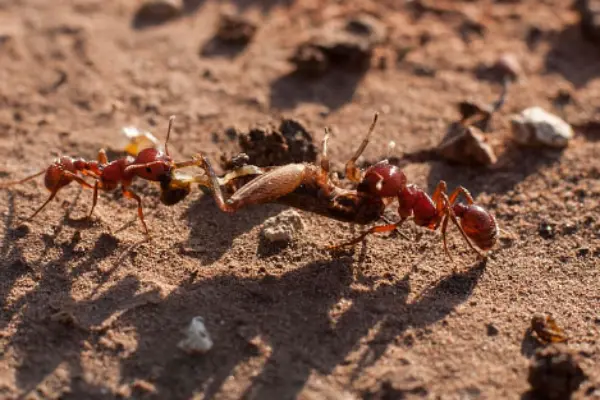
| Scientific name | Pogonomyrmex californicus |
| Color | Light red or brown |
| Size | 0.25 inch |
| Geographical location | United States & Mexico |
Only found in North America, mainly parts of Mexico, this species of California Harvester Ant is a member of the Myrmicinae subfamily. They can thrive in California, Nevada, Arizona, and Utah as well as other arid and semi-arid parts of the western states.
These ants in North America are recognized by their nest, which is a round crater of loose sand having a single entrance.
During hot midday, the Pogonomyrmex californicus foragers tend to be an impressive sight. They appear to be running stiff-legged and with an elevated Gaster to get off the heated surface. One of New Mexico’s most aggressive ant species, it has a painful sting.
2. Allegheny Mound Ant
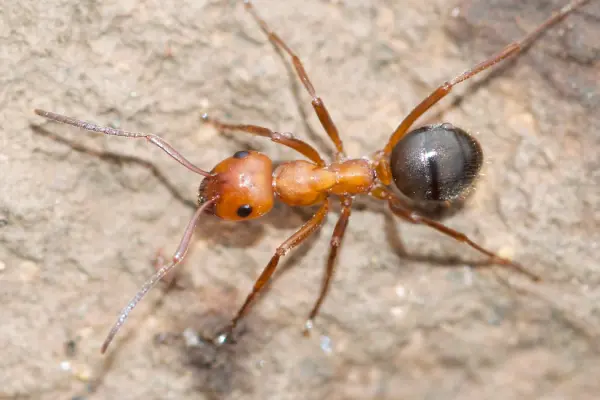
| Scientific name | Formica exsectoides |
| Color | Reddish tan-head & dark brown abdomen |
| Size | 3/8 inch (1cm) |
| Geographical location | Nova Scotia to parts of Georgia |
Allegheny Mound Ant is the common name for these ants in North America. Their habitat is deciduous forests and open woodlands, where they build huge mounds out of soil and plant waste. These are some of the biggest ant mounds and are used as colonies.
Small trees and bushes are killed by the formic acid that the ants inject into the nearby plants. However, by controlling insect populations and helping to spread seeds, Formica exsectoides contribute significantly to the environment.
3. Formica pallidefulva
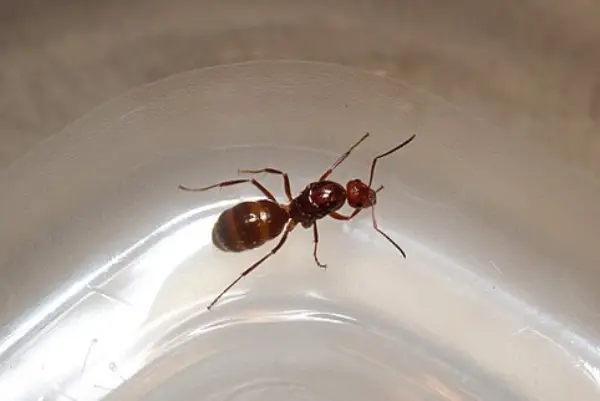
| Scientific name | Formica pallidefulva |
| Color | Brown |
| Size | 6-12mm |
| Geographical location | Eastern U.S. and Southeast Canada |
This species’ extensive distribution is probably caused by its capacity to nest in a variety of environments. All of the eastern United States and southeast Canada are home to Formica pallidefulva.
This ant species in North America live in a range of environments, from Plains to the lower-elevation, and Rocky Mountains.
Formica pallidefulva are less aggressive and have a lighter build. These are huge, brownish ants, measuring 6 to 9 mm for workers and 8 to 12 mm for queens.
4. Forelius mccooki
| Scientific name | Formica mccooki |
| Color | Brownish |
| Size | 8-10mm for queens & workers are 6-9mm |
| Geographical location | Canada & eastern U.S. |
The ant species Forelius mccooki belongs to the family Formicidae. This ant species in North America builds relatively tiny mounds in the ground. They may also build their nests beneath stones.
Or perhaps at the bases of arid plant species. Their many queens in the nests make an exception in their colonies. Even in the hot afternoon when no other ants are active, the Forelius mccooki worker ants are in swift-moving groups.
5. Texas Leafcutter Ant
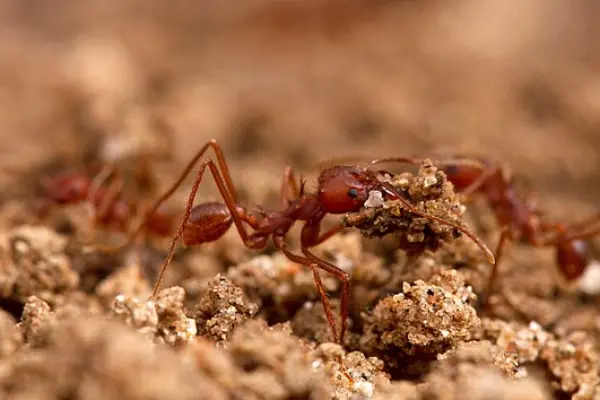
| Scientific name | Atta texana |
| Color | Orangish to brown |
| Size | Queens can be 18mm, workers between 3-12mm |
| Geographical location | Texas, Louisiana, north-eastern Mexico |
It is the fungus-farming ant, or you may also call it the Texas leafcutter ant in the subfamily Myrmicinae. The colors of the Atta texana species range from rust to bland dark brown.
They may have more than one queen in their colonies, unlike the other species in this genus. Furthermore, there are wide variances in their sizes. Worker ants, for instance, can range in size from 1/6 inch to 1/2 inch.
Virgin queens depart from the parental nest carrying a small amount of the colony fungus in their mouth. After mating and selecting a nesting location, this small quantity of fungus will be utilized to begin a new fungus garden. This explains their otherwise named “fungus-farming ants”.
6. Atta Mexicana
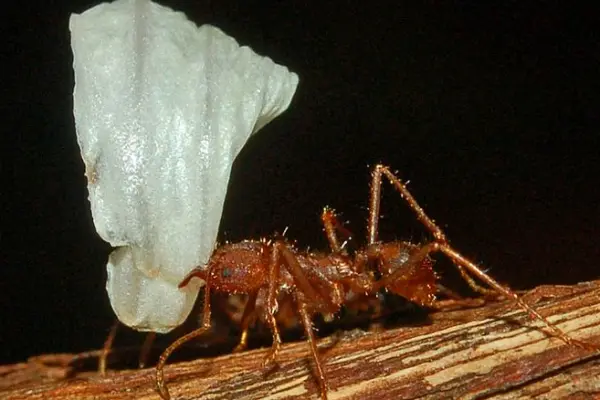
| Scientific name | Atta mexicana |
| Color | Dark reddish brown |
| Size | Workers are 3-16mm, Queens can reach upto 30mm |
| Geographical location | Mexico & Arizona |
Atta mexicana is a special species of the subfamily Myrmicinae. Aka the leaf-cutter ant, these are the vectors for the cultivation of the fungus Leucoagaricus gongylophorus.
The queen is 30 mm long and dark brown. While Workers have thorns and a dark brown appearance. Mexico and parts of Arizona, United States, are home to Atta mexicana.
In some parts of Mexico, they are even eaten as a snack or as part of a meal. They are also fried for tacos. The salsa de chicatanas sauce, which is put on tortillas with grilled meat or cheese, is traditionally made primarily with them.
7. Strumigenys angulata
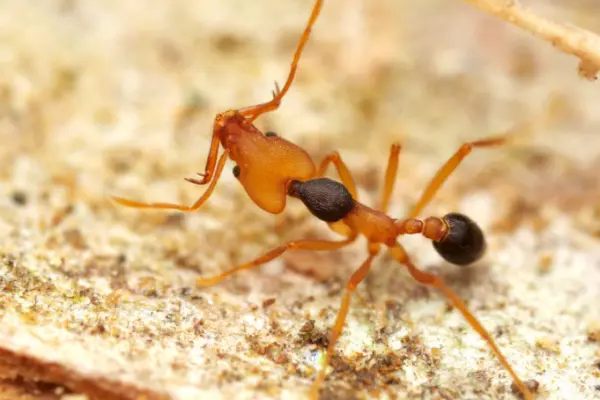
| Scientific name | Strumigenys angulata |
| Color | Light orange brown |
| Size | Workers 2-2.5mm |
| Geographical location | Northern Mississippi |
Strumigenys angulata is a woodland species that is frequently gathered from samples of litter. One may seldom come across this trap-jaw ant.
They mostly flourish in areas of northern Mississippi with mixed hardwood and pine forests. It shares a lot of similarities with another species of the same genus, namely Strumigenys pergandei, and is somewhat related to it.
8. Desert Acrobat Ants
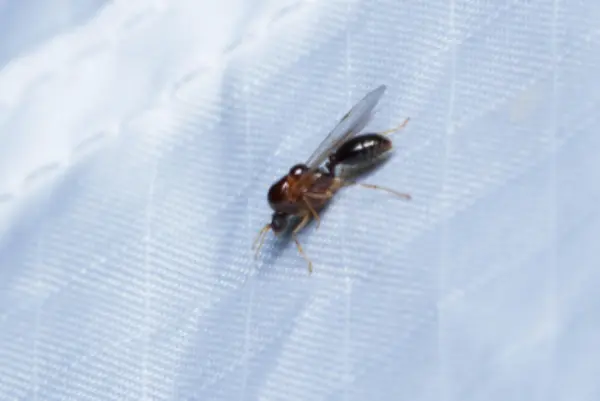
| Scientific name | Crematogaster ashmeadi |
| Color | Brown or black |
| Size | 2.6-3.2mm |
| Geographical location | Southeastern U.S. & Florida |
Florida is the natural home of acrobat ants. Their distinctive feature is a body that ranges from black to light brown with a heart-shaped abdomen, noticeably darker than the rest of the body.
Crematogaster ashmeadi eats on living and dead insects, as well as honeydew from aphids, similar to other acrobat ants. Typically, you can find them among logs, firewood, rocks, or under trees. These ants favor moist wood that has been weakened by fungi or rot for nesting.
The capacity of acrobat ants to acrobatically elevate their abdomen over their thorax and head, especially when startled, gives them their popular name.
They can frequently be seen all over Florida and the Southeast of the United States.
9. Western Thatching Ant
| Scientific name | Formica obscuripes |
| Color | Black or bicolored (red & black) |
| Size | 4-8mm |
| Geographical location | Canada, U.S. |
Also known as, Formica thatching ants are roughly 4 to 8 mm long, which is regarded as large enough for ants. Again, they are stocky ants with huge heads and strong jaws.
Some species are entirely black, but the majority are bicolored—red and black. Usually, the red part is at the head end.
The term “thatching ant” refers to ants that build big mounds that look like they have been “thatched” because they have materials placed on top of them to resemble a classic thatched roof in Europe.
In opposition to New Mexico, this species is more common in the Pacific Northwest.
10. Florida Carpenter Ant
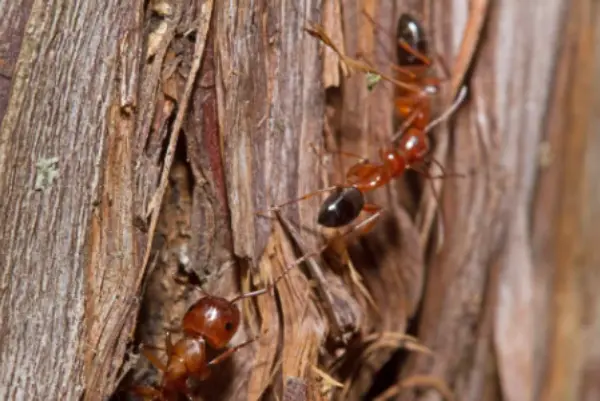
| Scientific name | Camponotus floridanus |
| Color | Bicolored- reddish orange with deep black gaster |
| Size | 6.5-11mm |
| Geographical location | Florida, U.S. |
The floridanus species of ants in North America, in the genus Camponotus, has the nickname Florida Carpenter Ant. Maybe due to its size and striking coloration, this species is common across Florida and widespread from Mississippi to North Carolina.
Camponotus floridanus is an aggressive species and they move rather quickly. Bicolored workers and queens have a reddish-orange head, bright to dullish orange mesosoma (middle segment), and legs, which are sharply contrasted by a deep black Gaster.
11. Formica perpilosa
| Scientific name | Formica perpilosa |
| Color | Bicolored; red & black |
| Size | 3-9mm |
| Geographical location | California, Mexico, Sonora, etc. |
A species of ant in the Formicidae family is called Formica perpilosa. In places like the Coachella Valley, California, Sonora, etc., this is a significant economic Grapevine pest.
Nests are present in the ground, and a tiny mound surrounds the entrance. They are widespread in places like Alberta, Wyoming, Texas, California, Chihuahua, and Coahuila in Mexico.
12. Small honey ant
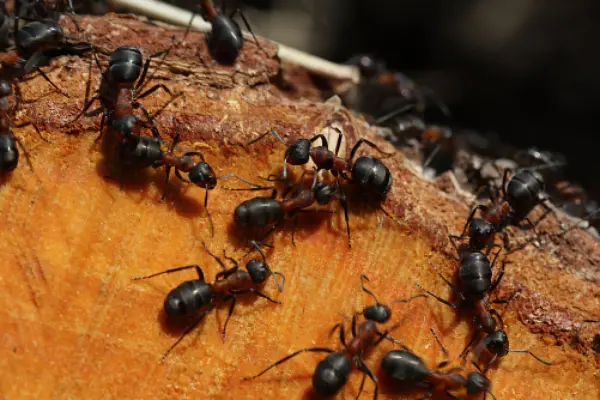
| Scientific name | Prenolepis imparis |
| Color | Reddish brown, while males are always black |
| Size | 3-8.5mm |
| Geographical location | U.S. & Mexico |
Popular with nickname ‘winter ant‘, or ‘false honey ant‘, this species belongs to the family Formicidae. These ants in North America has this characteristic nest building habit deep in the ground.
Unlike most of the ant species, they tend to love cold temperatures including near-freezing points. Also, they are only active in their surrounding during early spring and winters.
13. Western Harvester Ant
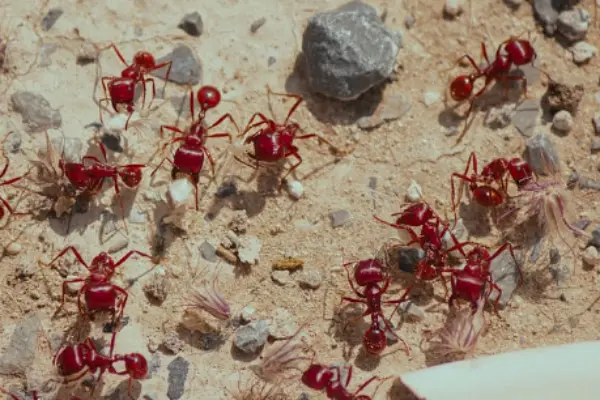
| Scientific name | Pogonomyrmex occidentalis |
| Color | Yellowish brown |
| Size | 6.5-14mm |
| Geographical location | Oklahoma, Texas, and New Mexico |
This species is a common site throughout the United States like in Oklahoma, Texas, Kansas, South Dakota and Nebraska, Wyoming, Colorado, and New Mexico.
Pogonomyrmex occidentalis is an eyeconic type of in the southwest region of the United States due to its abundance and possibly the attractiveness of its nests.
Conical pebble mounds built by this species often have inner chambers and galleries and basal entrances. The workers are extremely aggressive, and the colonies are extensively populated.
14. Maricopa Harvester Ant
| Scientific name | Pogonomyrmex maricopa |
| Color | Light to deep red |
| Size | 6-12mm |
| Geographical location | Arizona & Mexico |
The Maricopa harvester ant, or Pogonomyrmex maricopa, is one of the most abundant species of harvester ant that inhabits Arizona.
It is also common in the Mexican states of Baja California, Chihuahua, Sinaloa, and Sonora. People consider its venom to be the most lethal insect poison in the world. Rocks and gravel likely build their nest mounds.
The Maricopa harvester ant’s venom has proteins, peptides, and amino acids, similar to other insect venoms. The alkaloid toxin, which is the most noteworthy element in the venom of the Maricopa harvester ant, generates an “alarm” pheromone that chemically warns other ants nearby.
This is an example of chemical signaling, which explains why ants all seem to sting at once.
15. Myrmecocystus mexicanus
| Scientific name | Myrmecocystus mexicanus |
| Color | Yellow with darker eyes and thorax |
| Size | 6-18mm |
| Geographical location | North Mexico to lower California |
Most extensively researched Myrmecocystus species. They are nocturnal foragers who collect various wastes and occasionally collect dead insects, however, this is not a significant portion of their diet.
North from Central Mexico to Colorado and Utah, then west to Lower California are some of the regions where you might spot this species. Myrmecocystus is one of the six genera with the common name “honey ant“.
This species execute a peculiar behavior where some of the worker ants swell with liquid food until they become immobile and hang from the ceilings of nest chambers, serving as living food storage for the colony.
16. Camponotus maritimus
| Scientific name | Camponotus maritimus |
| Color | Dark reddish brown with black head |
| Size | 11mm |
| Geographical location | California |
This native species of North America occurs through a range of habitats. From coastal California to the western Sierra Nevada foothills, in open to wooded settings. Colonies are usually active behind stones than under rotting wood.
Their common habitats include chaparral, serpentine grassland, oak woodland, mixed redwood forest, serpentine coniferous forest, and coastal scrub. Camponotus maritimus ants are extremely sensitive to light and one may observe that frequently.
17. Camponotus discolor
| Scientific name | Camponotus discolor |
| Color | Reddish head and a blackish gaster |
| Size | 3.5-12mm |
| Geographical location | Louisiana, USA |
Camponotus discolor are generalist foragers, which means they consume a wide range of food items. Their usual diet includes small insects and other invertebrates, as well as nectar, fruit, and other carbohydrates.
These ants build their nests in natural cavities such as logs, stumps, and decaying wood. They are polydomous, which means that they have numerous nests and feeding grounds.
It is well known that Camponotus discolor ants have a somewhat long developmental period, and that colonies take several years to mature.
The queen only produces a small number of eggs per day, giving them a relatively low reproductive rate. Thus, their colonies have a rather low population density, with only a few hundred workers on average.
18. Snelling’s Carpenter Ant

| Scientific name | Camponotus snellingis |
| Color | Golden brown |
| Size | 5mm |
| Geographical location | U.S. |
This ant species belongs to the family Formicidae. The individuals of Camponotus snellingi have a bicolored gaster and are often larger.
Additionally, it typically has larger nests as well and we frequently discover vast colonies within dead tree branches and twigs as well as beneath the bark of both live and dead trees.
19. Temnothorax pergandei
| Scientific name | Temnothorax pergandei |
| Color | Yellow, dark brown, or bicolored |
| Size | 2.5mm |
| Geographical location | U.S. and Mexico |
Temnothorax pergandei is a widely distributed species with a wide range of integument colors, sculpturation, and spine length variation. This species builds its nests in soil, nutshells, stumps, and logs.
It is typically widespread in plant communities on higher, drier sites. Altogether, it may be nesting in low flatwoods and hummocks too including shady deciduous woodlands, or shaded prairie areas.
In Florida, it is active above ground all year round and widespread throughout the Eastern United States, be it Michigan, Arizona, or Hidalgo, Mexico.
20. Golden Fire Ants

| Scientific name | Solenopsis aurea |
| Color | Light golden |
| Size | 2.5-6mm |
| Geographical location | Southwestern U.S. & Northern Mexico |
Solenopsis aurea are the Golden Fire Ants in North America. The golden fire ant, which belongs to the Formicidae family and the Myrmicinae subfamily, is found in the dry, arid grasslands of northern Mexico and the southwestern United States.
The colonies are present in stony or loamy soils, or under stones, wood, or cow manure, or on the ground, ringed by a small mound.
Solenopsis aurea‘s lengthy brooding period results in small, sparse colonies. The majority of the time, workers have a light golden color with sporadic brown spots.
21. The Black Carpenter Ant
| Scientific name | Camponotus pennsylvanicus |
| Color | Black |
| Size | 3–21 mm |
| Geographical location | Central and eastern U.S. and eastern Canada |
One of the biggest and most prevalent species of native carpenter ants in North America is the black carpenter ant.
Typically, they construct their nests inside living trees, such as balsam fir, sugar maple, sweetgum, Prunus species, and northern white cedar. They can also be found in decaying wooden structures, stumps, and dead trees.
Caution! Carpenter ants attack in defense when their colonies are disturbed. Because of their size, the bite can cause distress and perhaps rip the skin.
22. Ghost Ant
| Scientific name | Tapinoma melanocephalum |
| Color | Light golden/transparent/pale yellow |
| Size | 1.3-2 mm |
| Geographical location | From South Florida to Volusia county |
South Florida has a high population of this species. They almost always seem to prefer living in busy areas, restricted to the regions surrounding buildings. Their nests can be found beneath fallen objects, loose bark, the bases of palm fronds, and bark mulch.
The reason ghost ants have the name “ghosts” is because when they run across light surfaces, their translucent legs and abdomens almost disappear, leaving just their dark thorax and head visible. Pale patches moving are all that you notice on darker surfaces.
23. The Odorous House Ant
| Scientific name | Tapinoma sessile |
| Color | Ranges from brown to black |
| Size | 1.5-3.2 mm |
| Geographical location | Canada and Mexico |
Tapinoma sessile, the odorous house ant, is a native species throughout the United States.
The odorous house ant colony is found indoors in wet areas, such as wall cavities next to hot water pipes, heaters, behind dripping faucets, etc. While outdoors, they are frequently discovered beneath firewood piles or in exposed dirt.
The smell the ants release when crushed is the reason behind their common names, “odorous house ant” and “coconut ant.” It is very comparable to the strong smell of turpentine, blue cheese, or rotting coconut.
24. Pavement Ant
| Scientific name | Tetramorium caespitum |
| Color | Dark brown bodies with pale legs |
| Size | 3.25 to 8 mm |
| Geographical location | Eastern U.S. |
Tetramorium caespitum usually nests in the cracks of residential buildings, beneath sidewalks, stones, and pavement, hence the common name. They consume nearly everything that humans eat, along with pet food, even though it is clear that they have a sweet tooth.
They frequently have their colonies close to water bodies.
The tiny stinger on worker ants is basically harmless but can cause slight irritation to people.
Conclusion
As we conclude this post, we must admit that ants are little marvels of nature. They have a lot of personality worth seeing, and they are more than simply pests in our kitchens. This brings an end to our list of North American native ants that are worth seeking out. In the meantime, you can browse the current articles until we create another thorough and engaging one.
Also Read:
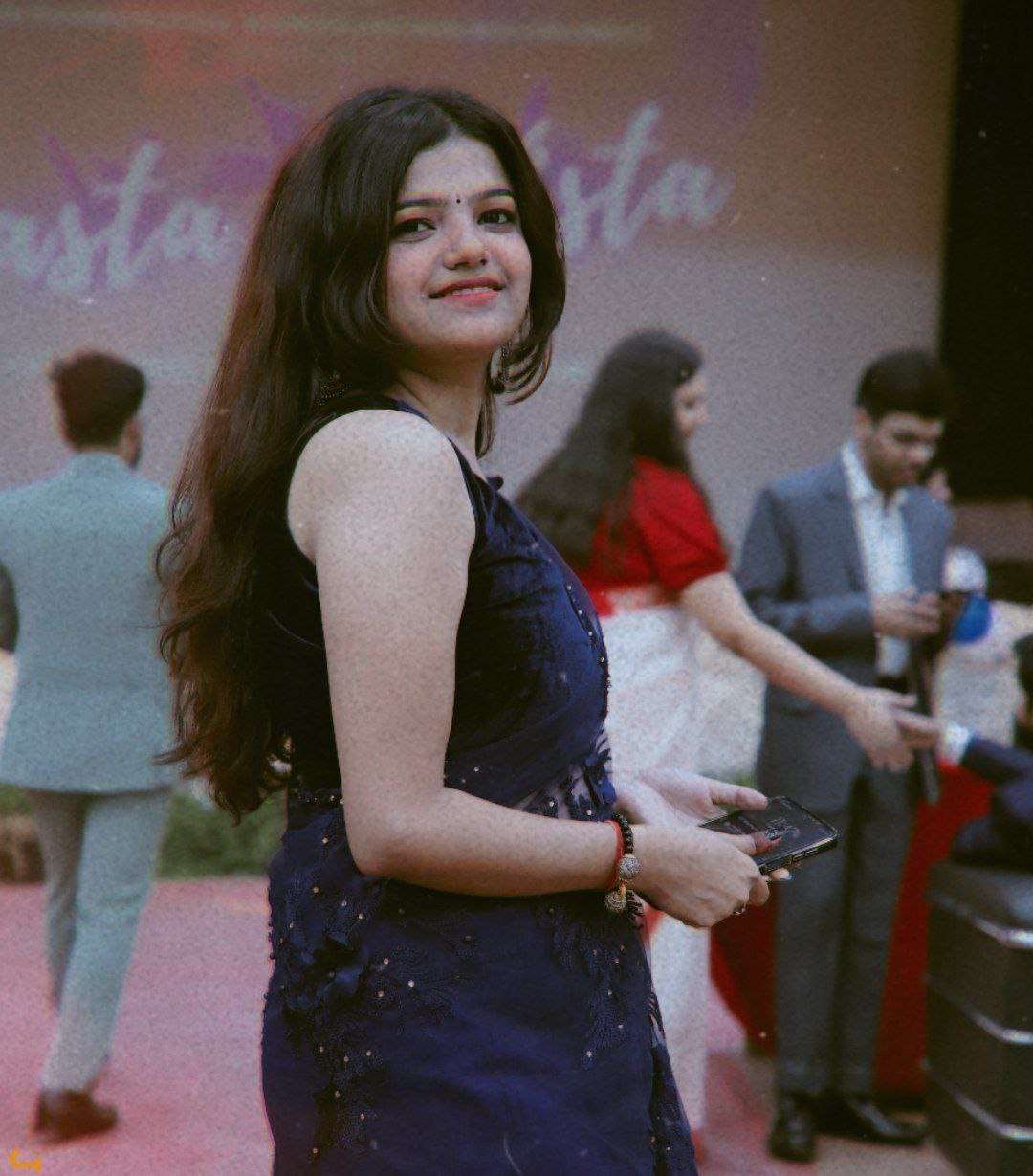
Anjali Prasad, a B. Pharm. graduate who works as a content writer for HowItSee, is based in Delhi. Except for her, not many people take the typical road from healthcare to writing. Her love of writing stemmed from her involvement in the college literature society and her early journaling at the age of 7. Hence, the love of learning and the spirit of exploration are what drew her to this career. You can find her on common social media like Instagram.
